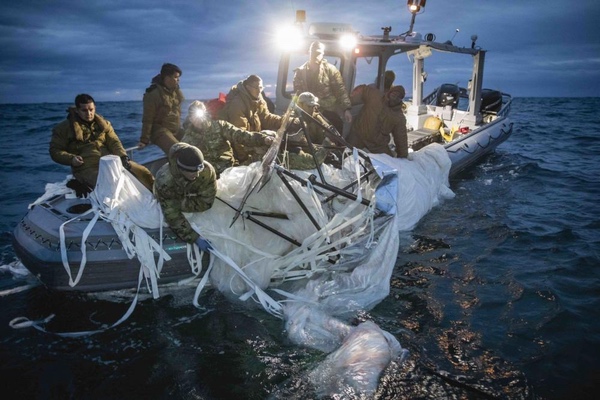Making something from the great balloon incident: space policy at the fringesby Roger Handberg
|
| Here is the key for space advocates: for reasons extraneous to space policy, the military is now conducting a heightened level of scrutiny for phenomena otherwise ignored or treated as the product of overactive imaginations. |
The point is that the intent is to explain events that occurred randomly and for which there was some observational evidence. The proverbial “little green people” were implicitly a target, but the observations were not deliberate in the sense of the search for extraterrestrial intelligence (SETI) as completed by radio telescopes. Given interstellar distances, identifying a civilization or its representatives focuses outward with less attention paid to possible visitors given the distances involved.
The balloon question began as a quasi-Cold War phenomena in that the two major powers, the US and China, spend much effort at penetrating each other’s boundaries in search of military and other information supporting their military forces. Once the initial balloon was shot down, the politics drove the Biden Administration to further improve its detection capabilities. Lo and behold, additional, previously obscure, objects showed up in NORAD airspace while others were identified as occurring across the globe. The politics are such that both parties are offended but neither seem interested in prohibiting such forays continuing so now all are in a heightened alert for such intrusions.
Given this new sensitivity to what is up there, apparently adjusting the sensitivity of various detection instruments reduces the gaps found in American defenses. Here is the key for space advocates: for reasons extraneous to space policy, the military is now conducting a heightened level of scrutiny for phenomena otherwise ignored or treated as the product of overactive imaginations. Given the inertia inherent in a bureaucracy, a flood of data is now being produced which, in principle, can be analyzed for evidence of UAP or UFOs, depending on your choice of terms. How long this data collection will continue is unknown, but the opportunity is there for broader use in this special area of research. In fact, in explaining the shortfall in detection, it has been stated that detection of such phenomena had occurred earlier, including the Trump Administration. Since missile defense and other military early warning systems look for fast movers, ballistic missiles or aircraft, the treasure trove of information may be larger than one knows currently. When opportunities arise, those interested must step forward and make their case for access. In a age of supercomputers, the data can be processed more quickly than earlier years.
Note: we are using a new commenting system, which may require you to create a new account.
